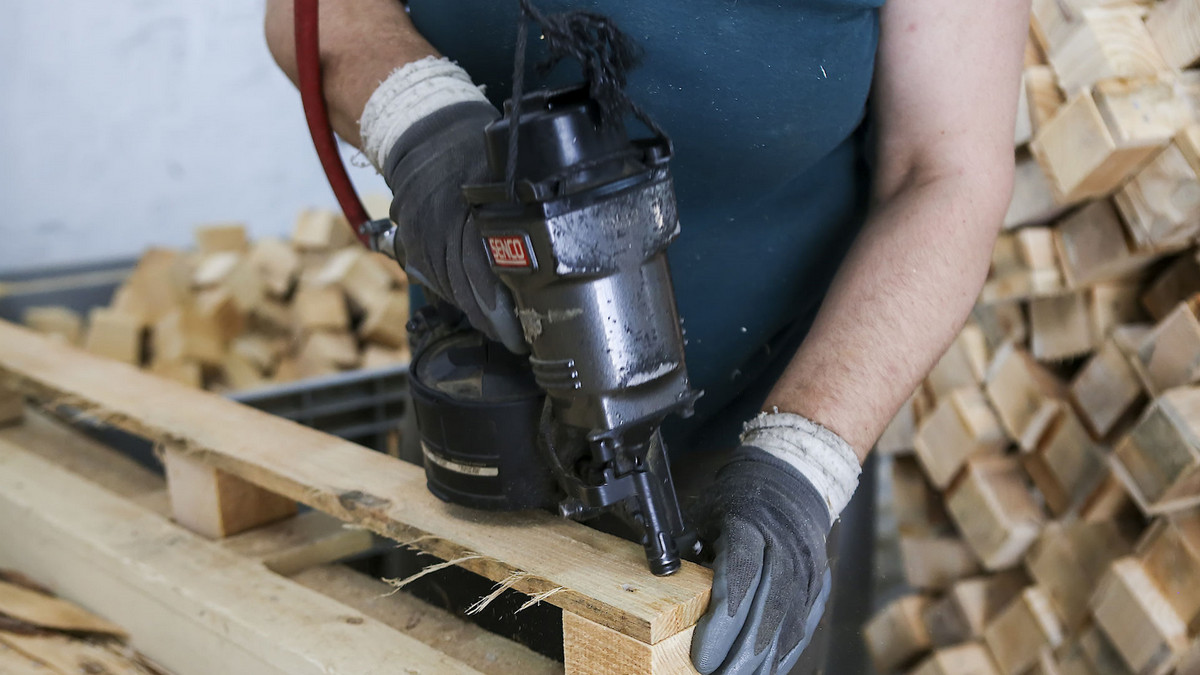When it comes to maintenance tools, many people strongly recommend electric tools. They come in many varieties, are easy to use, and have low prices, so are especially suitable for home use. There is another powerful and efficient category of tools that are widely used in the tool industry that operate by air pressure; pneumatic tools. So, what is the difference between the two, and how should one choose? Let’s compare.
Power hand tools can be divided into electric hand tools (such as electric drills, electric screwdrivers, chainsaws, etc.) and pneumatic hand tools (such as pneumatic screwdrivers, pneumatic wrenches, pneumatic sanders, etc.) according to the external power source used. What is the difference between electric tools and pneumatic tools?
The initial investment for electric tools is low, but for long-term use, the energy consumption is high, and the cost of tool maintenance and replacement is also high. One advantage of pneumatic tools is that they can be used in harsh environments, however they require regular maintenance.
Pneumatic refers to the use of high-pressure gas to drive the mechanical device to rotate and tool. Electric tools convert electrical energy into mechanical energy to drive the tool. Pneumatic tools are safer than electric tools, but are bulkier in size. Electric tools are more compact in size.
Precautions of Use
Pneumatic tools:
- The air is easy to obtain and the working pressure is usually quite low. Used air can be easily discharged on the spot without the need for recycling pipes.
- Air has low viscosity and small flow resistance loss so is convenient to use with a centralized air supply and tubing.
- Pneumatic actuators move at a high speed.
- Pneumatic tools are highly adaptable to most environments. They are reliable in humid and dusty environments, and over wide temperature ranges. They do not pollute the environment, and have no fire or explosion hazards, so are very safe to use.
- Simple structure, convenient maintenance and low cost.
- Pneumatic components have long service life.
- Pneumatic tools and their components are smaller than those of the hydraulic tools so can operate at higher speeds.
Electrical tools:
- Carefully check the appearance and for any damage. The switch should be flexible and operate without jamming. The power cord and casing of the electrical tool should be intact.
- Hand-held power tools with metal shells should have a reliable protective grounding wire. The power lead is a multi-core, soft rubber sheathed cable, and both ends of the grounding protection wire should be firmly connected.
- Hand-held power tools should be used by professional personnel with certain professional knowledge. The relevant safety operation rules should be strictly observed during use.
- Before use, check whether the relevant electrical protection devices and mechanical protection devices are in good condition and operating normally. Pay attention to whether the rotating parts are flexible and free from jamming.
- When using Class I hand-held electrical tools, the user must wear protective equipment that meets regulations. Proper safety protections should be taken to prevent electric shock such as installing a leakage protector in the power circuit, or wearing insulating gloves, insulating shoes or standing on an insulating pad. When using Class II hand-held power tools in humid and narrow places, a leakage switch should be installed. The working current of the electric switch should be less than 1.5mA, and the action time should be less than or equal to 0.1 seconds. The leakage switch should be inspected by a qualified person regularly.
- Occupational hazards of using hand-held electrical tools.
Environmental Adoptability
Pneumatic tools:
While they can be used in harsh environments, maintenance such as dust removal, water removal, lubricating, etc. must be done properly. Pneumatic tools often use air from and air pump powered by an internal combustion engine, so are very portable and suitable for field work. Pneumatic tools can work continuously for long periods of time without overheating so are suitable for large-scale production lines.
Electrical tools:
Electric tools should not be used in wet environments where there is a danger of electrocution. As they can generate electric sparks, they should not be used in places where there are flammable materials that could cause a fire or explosion. They are not suitable for use in coal mines, oil fields and other areas with petroleum present.
Economic Prospect
Pneumatic tools:
The initial investment requires the establishment of air pressure pipeline equipment, but the long-term use is low in energy consumption and tool maintenance.
Electrical tools:
The initial investment is low, but the energy consumption for long-term use is high, and the cost of tool maintenance and replacement is also high. The weight is generally 3 to 4 times that of pneumatic tools, so they are not suitable for long-term work, while pneumatic tools can improve work efficiency.







.png)






